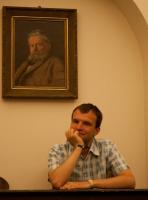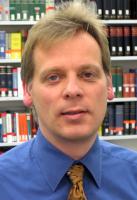Community Structure in Time-Dependent, Multiscale, and Multiplex Networks
Science, 328 (5980):
876-878 (2010)DOI: 10.1126/science.1184819
Abstract
Network science is an interdisciplinary endeavor, with methods and applications drawn from across the natural, social, and information sciences. A prominent problem in network science is the algorithmic detection of tightly connected groups of nodes known as communities. We developed a generalized framework of network quality functions that allowed us to study the community structure of arbitrary multislice networks, which are combinations of individual networks coupled through links that connect each node in one network slice to itself in other slices. This framework allows studies of community structure in a general setting encompassing networks that evolve over time, have multiple types of links (multiplexity), and have multiple scales.
Description
Community Structure in Time-Dependent, Multiscale, and Multiplex Networks
Links and resources
Tags
community
@kibanov's tags highlighted
- community
- communities
- time
- structure
- multiplex
- clustering
- cordis
- dependent
- dis
- funcdis
- graph
- multi
- multiscale
- network
- project:bmbf
- cluster
- citedby:scholar:timestamp:2020-9-15
- evolving
- graphs
- networks
- detection
- modularity
- multislice-networks,
- temporal-networks
- interdependent-networks
- citedby:scholar:count:1565
- scale





